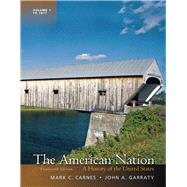The American Nation’s pedagogical mission is to show readers how history connects to the experiences and expectations that mark their lives. The authors pursue that mission through a variety of distinctive features, including an innovative art program and provocative chapter-opening questions and essays to engage readers.
‘’…does an excellent job of organzing the material in a way that ties everything together for the student…this text provides the best instructional aides on the market. Without the powerpoint presentations and instructor test banks, my preparation for these subjects would be considerably more time consuming and difficult.’’-Andrew Bagley, Phillips Community College
‘’…does an excellent job at providing a compelling chronological narrative that flows smoothly. Although our History Instructor Selection Committee continues to examine other textbooks, we have not found one that surpasses the strengths of this textbook.’’ -Horacio Salinas, Jr., Laredo Community College








